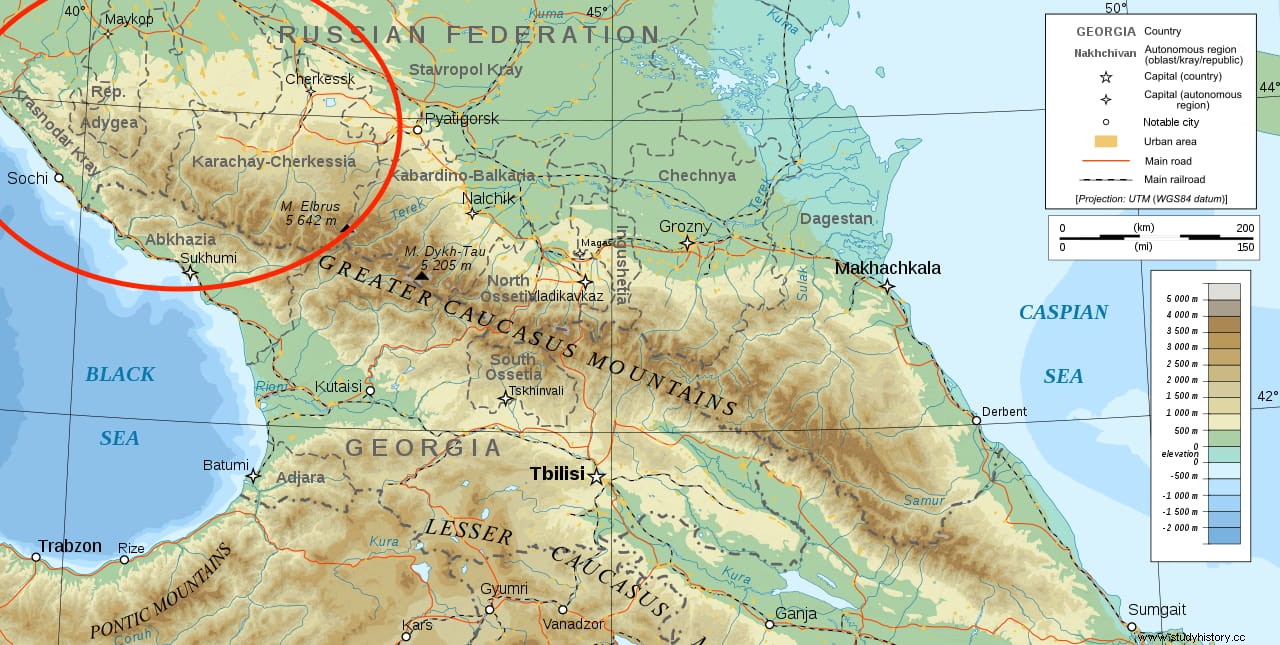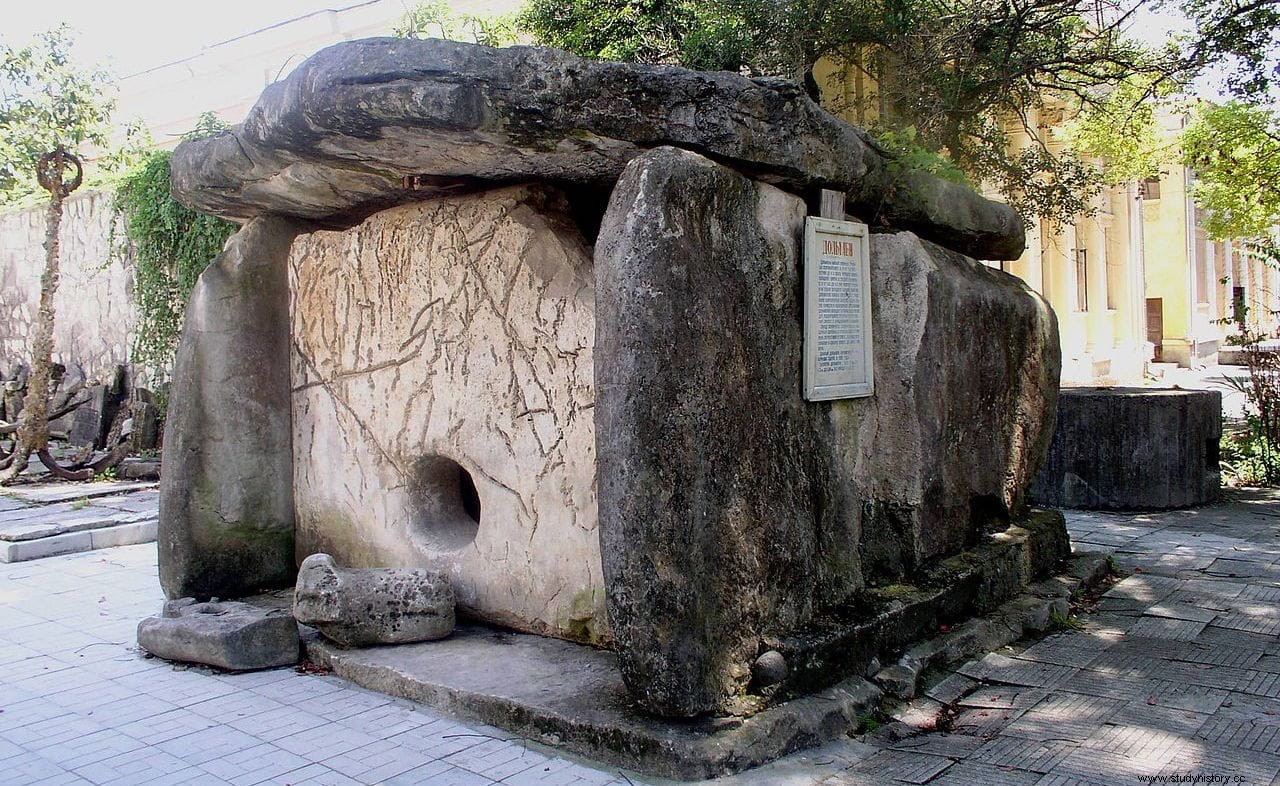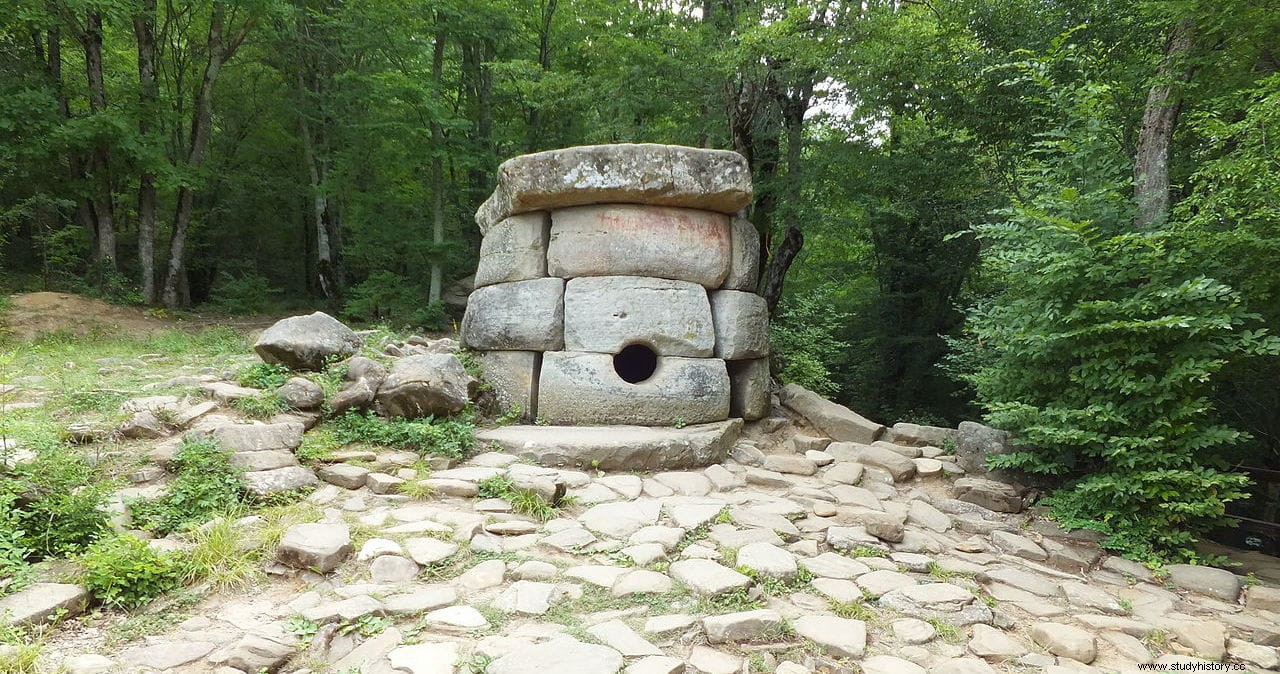Since the end of the 18th century, numerous travelers have left in writing mentions and brief descriptions of some curious dolmens scattered on both sides of the Caucasus mountain range, on its western slope, between Abkhazia and the Tamán peninsula.
But it would not be until the end of the 19th century that its study would begin with the excavation of some of the structures. During the following decades, sites and remains of settlements of the culture that had built them came to light, which was precisely called Culture of the dolmens of the Western Caucasus , as these are its main manifestation.

It is a culture that developed at the beginning of the Bronze Age and that built megalithic structures between 2900 and 1300 BC. Then it disappeared, without the causes being known, although unfinished dolmens have been found, which would indicate an event of sudden change.
The origin of this culture is also unknown, and similarities can be traced with the Maikop culture, which developed in the area between 3700 and 2500 BC. and had connections to both northern Mesopotamia and the Yamna culture further north.

The settlements, which are always located near rivers or in elevated areas on the banks, are made up of dwellings built of wood and clay. The communities were dedicated to agriculture and livestock, and knew metallurgy, since arsenical bronze molds and ingots have appeared. Carnelian necklaces discovered at some of the sites indicate that they traded over distances as far as India.
The dolmens built by this culture, of which some 3,000 have been cataloged around the cities of Tzelentzchik, Touapse, Novorossiysk and Sochi, do not seem to have had a funerary function like those in other areas of Europe. At least not strictly, since due to their characteristics, mainly the open facades, they may have been a kind of temples or places of family worship. In this sense, a stone altar was discovered in the reconstruction of the Zhane dolmen complex.

The oldest dolmens correspond to the southern slope, close to the coastal zone and dated to the middle of the 3rd millennium BC. Among them are those of Eshera, Azant, Otkhara, Kulanurkhva, Shroma and Doi. All of them are medium and small in size.
In some petroglyphs have been found representing scenes of deer hunting, and also of fighting and combat between men in the case of the Dzhugbga dolmen. But most feature geometric motifs, such as triangles and circles. In a few in the Klady area, traces of paint were even found.

As for the construction characteristics, some of the dolmens are monolithic, while others are built in several pieces, large stones that overlap. Most have a square, oval or circular entrance carved into the façade slab, while the floor plan can be square, trapezoid or circular.
They represent a unique type of prehistoric architecture, as stones are carved at 90-degree angles, to fit into corners, and others are curved to form circular walls. In addition, many have a kind of patio that extends in front of the facade, where rituals would be held. This patio is usually delimited by large stone walls, sometimes more than a meter high.

Some authors defend the astronomical function of some of these dolmens, which would be observatories in line with other European, American and Asian megalithic monuments. In this sense, the unfinished dolmen of Mamed stands out, on the right bank of the Kuapse river, whose western side has the shape of a pyramid, which seems to point towards the sunrise at the equinoxes.
